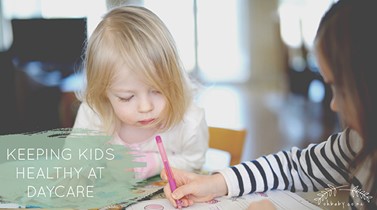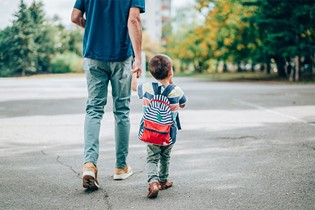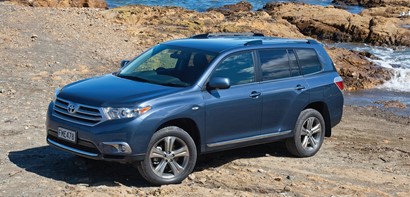Helicopter parenting

Are we too over-protective or is the world really too dangerous to allow our children the freedom we used to have? Liz Breslin and Laura Williamson take sides.
Safety first
Helicopter parenting. Cotton wool kids. Boys and girls bubble-wrapped until they are so safe they can't breathe. Is this childhood today?
Sometimes it feels that way. Take a child's first year of life: The list of no-nos seems to keep growing - no eating nuts, no sleeping tummy-down, no riding in a car unrestrained, no going outside without sunscreen, no playing in an unfenced yard, around dogs or near water. My grandmother thinks we're all crazy.
"It's a miracle anyone used to survive childhood!" she mutters, in the sardonic voice of a woman who successfully raised five children without the benefit of parenting magazines, Plunket or, some of the time, electricity.
Then again, she did take a military approach to parenting. My dad told me she once held a match to one of his toes and then hit another one with a hammer to demonstrate that, in the event of a fire, it would hurt less for him to break a leg jumping out of his second-storey bedroom window than to remain inside and burn to death. (I don't actually think this is true, my dad likes to exaggerate).
What is true is that, as a young parent in the 1940s, she was terrified of fire. Houses, she says, used to burn down all the time. This is something we don't worry about as much anymore because of smoke alarms. Are we being over-protective installing alarms in our children's rooms? No, it's common sense. And I have no doubt Grandma would have used them if she had had the chance.
The same goes for the precautions we take now. For example, prone (tummy down) sleeping is, along with parental smoking and bed-sharing, an identified risk factor for Sudden Infant Death Syndrome (SIDS). In the United States, prone sleeping dropped from 75% in 1992 to 25% in 1995. During this period the death rate from SIDS dropped by 25% - the largest drop seen since SIDS statistics had been collected. Yes, I slept on my tummy as a baby and made it to adulthood but perhaps others did not.
Car seats, sun screen and nuts are similar. While our modern aversion to risk may seem over the top at times, it is based on good knowledge that we just didn't have before. With the same information, parents of the past would have used the same safety measures.
There is a lot of debate about whether the world is more dangerous for children than it used to be. In some ways it isn't. The perception that children are at more risk of abduction, for example, is not supported by evidence. But in many ways it is more dangerous. On the roads, for example. A study conducted by scientists at the University of London found that children aged six to 11 could not reliably estimate the speed of approaching vehicles travelling at more than 30kph. You can teach them to look both ways but they may not have the cognitive ability to decide when it's safe to cross.
This was less of an issue in, say, the 1950s. There were fewer cars on the road then, they were smaller and they travelled slower. The risk of a child playing in a residential neighbourhood encountering a speeding car was simply smaller.
Modern children also face dangers that we couldn't have imagined even 20 years ago. My son could competently operate a computer mouse by the age of three. Part of his playing and learning, from a very young age, was done online. This is his reality yet, when young people go online, things can go badly wrong: violent images, cyber predators, exposure to a whole lot of things our parents never had to consider when checking out books for us at the public library.
At the same time, modern family life means, for better or for worse, that there are fewer adults round to watch out for children than there used to be. It was once common for an extended family to live together, or at least near one another. This is no longer true. Without grandparents to help with childcare, without older cousins to mind younger ones, or even neighbours with whom children are close and able to turn to for help, it's all up to Mum and Dad now. Overprotective? Not necessarily. Maybe the world beyond the nuclear family has become under-protective.
Yet, despite cyber danger, fast, powerful cars and a world that is a whole lot more crowded and complicated than it was in decades past, our children are statistically safer than ever. In New Zealand, according to the Children's Social Health Monitor, infant mortality rates have declined from 18.2 per 1000 in 1968, to 5.3 per 1000 in 2008. Even in the US, the land of handguns and speeding SUVs, mortality rates for children aged one to 14 from all causes, including accidents, have dropped by more than 40% since 1980, as reported by Child Trends.
Why is life safer for children now? For one, because we, as parents, have made it that way. We are more vigilant than we used to be - and our vigilance is working.
According to my Thesaurus, protect is the opposite of neglect. So is cherish. To cherish and protect: surely these, above all, are my most important tasks as a parent?
Laura Williamson is a Wanaka-based freelance writer and editor whose work has been published in newspapers here and overseas. Her son Liam is now six.
Challenges within boundaries
Life is a risky business. I was all set to start this article with a metaphor when a real-life conflict bared its ugly teeth.
I'd sent the twins, aged seven and a half, about 300 metres down the road to the library to put an overdue book in the slot in the wall. It was a straight path the whole way and I drove the car around to meet them. So far, so good. Except when I arrived, they weren't there. I thought about panicking but reassured myself. It's a small town. They've got big brains. Sure enough, less than a minute later, they came pelting down the steps, deposited the book and flew towards me.
"Mum we went the wrong way…
And Dylan said, "No…"
And Lauren said, "No I told you…"
"No I did… and we ran and we..."
Phew. Or nearly. I was in the middle of congratulating them on their belated navigational skills when it happened.
"Excuse me. Excuse ME. I think your children are far too young to be roaming around alone and the little one was upset."
True, Lauren had been freaking out, but mostly because Dylan hadn't listened to her telling him the way to go. An hour later, they'd forgotten about it all. But I was still smarting. Who was she, that woman, to foist her opinion on me in the street? And worse, what if she was right?
Not a chance, my friends reassured me, as we let the kids stir their own packet soup into boiling water and cut slices of cheese with real knives. She doesn't know your children - their abilities, their strengths or the number of times we've walked that street together. She probably meant well but she highlighted the difficulties we face in allowing our kids to roam a little free and trust their instincts.
It starts young. The classic helicopter parent hovers, moving any potential ickies out of baby's way. Oooh no. Dirty. Sharp. Hot. Messy. Small. Help! So many teachable moments bite the dust before they're aired. It's the fear.
And these days, there's more for the helicopter parent to fear, thanks to salacious, distorted, irresponsible media reporting. Compound that with the effects of modern marketing: there's more chance of feeling inadequate unless we buy all those safety solutions.
Of course the challenges will be different for our kids. It's not like the bad old days when we were growing up and a bloody knee was the sign of a good time had by all. So we might as well adapt together. If it's our children's world, then we owe it to them to equip them with practical abilities while nurturing their natural instincts. And if that opinion puts me in the Bad Mothers Brigade, I guess I'm in good company.
Take Lenore Skenazy, pioneer of Free Range Kids in the States. Skenazy was vilified for letting her school-aged son ride the New York subway alone. On her blog (freerangekids.wordpress.com), the woman hounded as "America's Worst Mom" provides an outlet for parents who believe in letting their kids take challenges within boundaries. She says: "We are not daredevils. We believe in life jackets and bike helmets and air bags. But we also believe in independence. Children, like chickens, deserve a life outside the cage. The over-protected life is stunting and stifling, not to mention boring."
Well said, that woman and others who let their children jump off furniture, hang upside-down in trees, use hammers to build huts. I'll safeguard the peripheries, but the lessons are theirs to learn.
And actually I'm more afraid of the consequences of living in a world where kids are not taught self-sufficiency.
Liz Breslin is a freelance writer based in Hawea Flat, Otago. She is the mother of twins, Dylan James and Lauren Marie, now eight.

AS FEATURED IN ISSUE 12 OF OHbaby! MAGAZINE. CHECK OUT OTHER ARTICLES IN THIS ISSUE BELOW

















